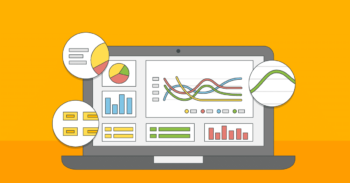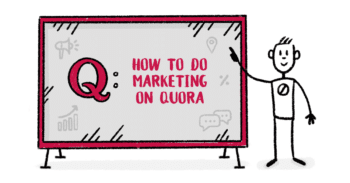Content Analytics: Power Up Your Strategy Beyond Mere Pageviews

If your SaaS company relies on content marketing for brand building and lead generation, you need the right content analytics to track performance and key results.
But if you focus on pageviews alone, you’re missing a crucial piece of the puzzle.
Instead, you need metrics that offer a better understanding of what’s driving growth and revenue, especially in a zero-click world. So how do you know what to measure?
In this guide, we’ll explore the content analytics that matters for SaaS marketers—so you can reliably measure business impact and ultimately get more value from your content.
Why SaaS Content Analytics Should Go Beyond Pageviews
Sure, pageviews can help you gauge traffic and compare your content to the competition. Yet this surface-level metric can’t tell you what your content is actually achieving.
Say your newest blog post drives 10,000 pageviews in a week. That might sound pretty great, especially if it exceeds the competition’s traffic or your own site’s benchmarks.
But did those pageviews turn into clicks to your pricing page? Maybe a lead magnet download or a chatbot interaction? How about a booked demo or a free trial signup?
Did any of those visitors return to your website later to explore further or complete a conversion? If you count pageviews alone, you can’t see what’s really making an impact.
Besides, in an increasingly zero-click world, pageviews are likely going to decline over time—which means they’ll matter less and less. And as your ideal customer profile (ICP) increasingly relies on AI for answers, you can expect fewer clicks overall.
So what does that mean for your SaaS company? Looking beyond pageviews is critical for both your content marketing strategy and your business growth.
How to Build a SaaS Content Analytics Framework
By identifying the metrics that make a business impact, you can extract more valuable data from your content. Use this quick guide to develop your own SaaS content analytics framework.
1. Identify Content Marketing Metrics
First, use your company’s objectives and key results (OKRs) or key performance indicators (KPIs) to identify what your content strategy needs to achieve.
Then take those measurements and map them to relevant content marketing metrics. You’ll find suggestions for engagement, SEO, conversion, and performance metrics in the next section.
Remember, you don’t need to monitor every possible metric. Zero in on your OKRs or KPIs and add other metrics to your framework only if they provide helpful context.
2. Choose Content Analytics Tools
Next, build a tech stack that can measure and visualize the metrics you defined. Here are some tools to consider:
- Content intelligence platforms like MarketMuse or DivvyHQ
- Website analytics tools like Google Analytics, Google Search Console, or Looker Studio
- SEO dashboards like Ahrefs, Moz, Semrush, or SE Ranking
- Lead scoring platforms like Breadcrumbs or HubSpot
- Social media marketing and advertising tools like Hootsuite or AdEspresso
3. Measure and Optimize Content
Then use your content analytics tools to measure performance. Identify the content that’s making the biggest business impact and answer questions like these:
- Why did your top-performing posts work so well? Can you repeat the formula?
- Are certain types or formats far outperforming others? For example, are comparison pages driving tons of leads, or are content pillars getting lots of backlinks?
- Is there a clear relationship between metrics? For example, does time on page or backlink count correlate with conversion rate or revenue?
- Which channels are driving the most valuable traffic to your site? How can you improve your content distribution strategy?
- What types of content are attracting the least valuable traffic? Can you phase out some content types to make your strategy more cost-effective?
Finally, use your insights to write better content, optimize existing content, and improve your SaaS content marketing strategy.
Tracking Behavioral Metrics
User behavior analytics reveal how your audience finds and interacts with your site. Where does your traffic come from and what do site visitors do on a typical page?
Pageviews
It’s true that pageviews shouldn’t be the only content marketing metric you measure. But analyzing pageviews does provide some value.
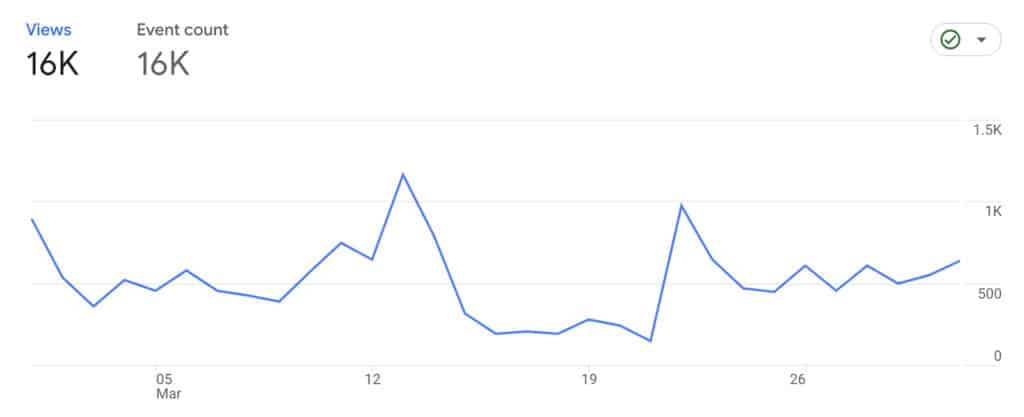
Pageviews can show you whether specific pieces of content are getting the expected traffic volumes. If pageviews spike or drop, you can work backward and find the traffic source.
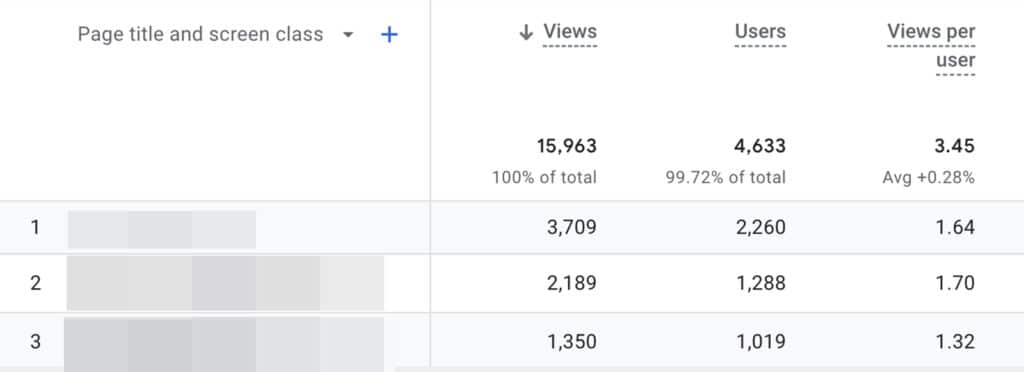
Clicks and Impressions
As AI queries and zero-click content compromise click-through rates (CTRs), you can expect fewer page views. But by measuring clicks and impressions, you can see if your content is actually appearing on search engine results pages (SERPs) or if it needs better visibility.
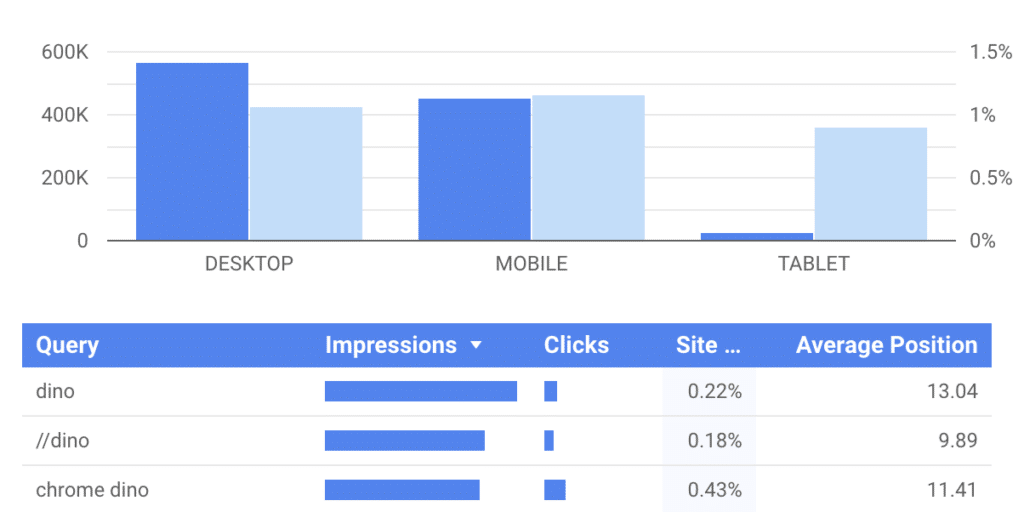
Nick Jordan, Co-founder of Workello, explains: “Thanks to zero-click content, users might not even have to click through to a website to access material like Google’s featured snippets. Monitoring metrics like impressions and click-through rates can still offer information about how well content performs.”
Time on Page
Small differences in time on page might not matter much in the grand scheme of things. But if some of your content is generating particularly low time on page (and minimal leads or conversions), then that’s probably a sign of low-quality content or an intent mismatch.
Svitlana Shchehel, Head of Content at SE Ranking, clarifies: “Most visitors come to our blog from organic search, so we naturally keep tabs on the organic traffic metric. We also keep an eye on user behavior metrics such as average time on page, scroll depth, and bounce rate. This allows us to understand how well our content satisfies user intent.”
Bounce Rate
Do visitors leave your site within a few seconds or without exploring further? A high bounce rate can result from an intent mismatch, but it can also mean the page is attracting low-quality traffic.
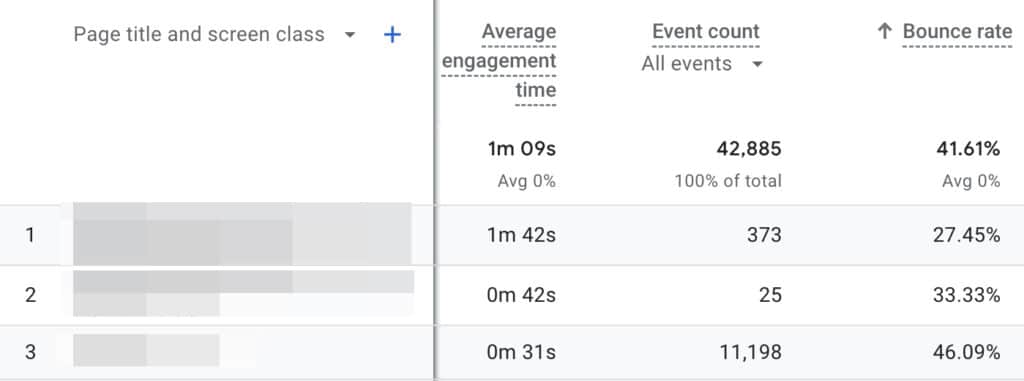
To understand what’s happening with your bounce rate, analyze it alongside other content marketing metrics like traffic source and ICP fit (see below).
Pages Per Session
If users visit multiple pages per session, that could be a sign your content is engaging and you’ve added strong calls to action (CTAs). In addition to counting pages per session, it’s helpful to know what kind of content users explore next.
Levi Olmstead, Director of Content at Whatfix, measures “intent signals per content piece—i.e. if a user takes an action after reading an article like viewing a pricing page, a case study, a product video, etc.”
Traffic Sources
Which channels are driving the most valuable traffic to your website? Is organic search, paid search, email, or social media leading to the most pageviews and the best outcomes?
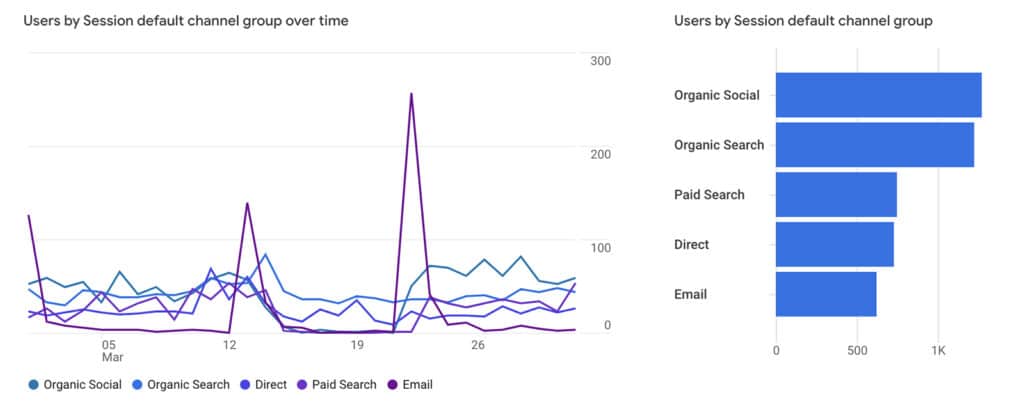
If you can tie traffic sources to metrics like leads, conversions, and revenue, you can make smarter decisions about where to invest content marketing and distribution resources.
Measuring SEO Metrics
SEO metrics indicate how well your content performs in search. They can also reflect the quality of your content and the value it provides at various funnel stages.
Keyword Ranking
Does your content rank at the top of search engine results pages (SERPs) for critical keywords? That’s a sign you’ve published content that fits search intent and provides unique value to visitors.

In addition to monitoring individual keyword rankings, you can assess the strength of your content marketing strategy by paying attention to your keyword portfolio.
For Cierra Loflin, Content & Community Manager at Superpath, leading indicators are key to measuring content performance. “We have more and more keywords ranking on page 5 of Ahrefs and other keywords that are moving up in rankings from positions 1-10. This signals that our SEO plays are paying off.”
Branded Keywords
Not all keywords are created equal. Measuring outcomes for various keyword types can help you see how they map to funnel stages and how much value they really create.
For Marketing Consultant Isabel del Canto, “Organic traffic via branded keywords tells me our content is working for folks who are further down the funnel. It also puts me in the frame of mind of asking myself, ‘How can our content help our ICP make an informed buying decision?’”
Inbound Links
If you have a link-building strategy, then counting backlinks is more of a measure of SaaS SEO success. But if you don’t proactively build links, this metric works a little differently.

Is your content attracting tons of backlinks naturally, without the need for outreach? That’s an excellent indicator of the quality of your content, which can affect your ability to build topical authority.
Evaluating Engagement Metrics
Engagement metrics signify how your content resonates with potential customers. Is your audience actively engaging or consuming your content passively?
Post Comments
Does your audience reliably ask questions, offer insights, or express interest in your content? Counting comments on blog posts is a good start for evaluating engagement.
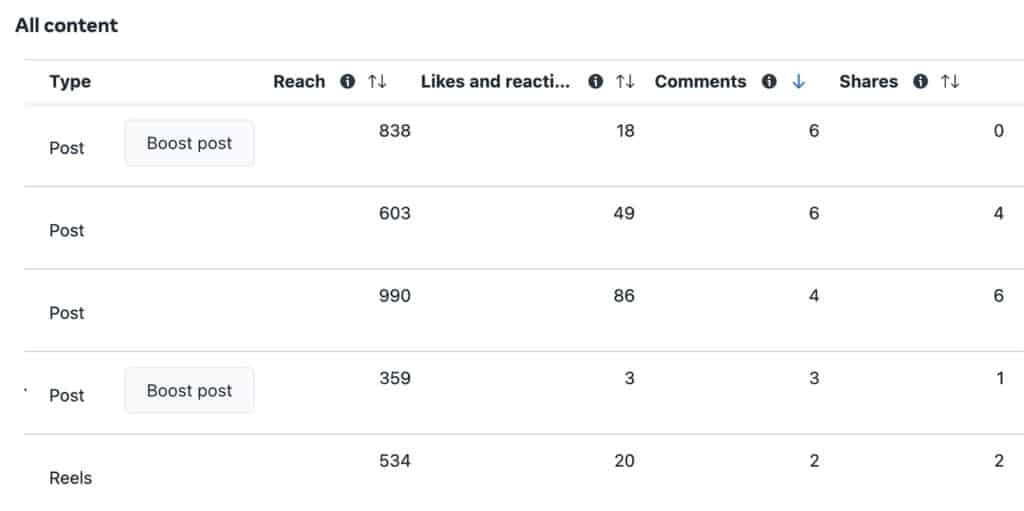
If you distribute content across social media channels, counting those comments and reactions can also help you measure success. By comparing analytics from each channel (like Facebook, pictured above), you can identify which are the best fit for your SaaS and your audience.
Social Shares
Ideally, your marketing team won’t be the only ones sharing your SaaS content on social media. When other accounts share links to your site, they’re essentially endorsing your content.
Measuring social shares can help you keep track of these endorsements, which is another good gauge of your content marketing quality.
Open Rates
If you distribute content via email, then open rates and CTRs are also important to count—especially when you take a step back and analyze them over time. For example, Superpath recently experienced declining open rates despite rapid email list growth.
Cierra Loflin explains: “Since the newsletter headline and content promotes our new blog content 90% of the time, declining open rates signaled that our content may not be resonating with our audience. I’ve become more selective about what content we focus the newsletter on, and open rates are going up and to the right again.”
Analyzing Lead Generation Metrics
While user behavior, SEO, and engagement metrics can tell you about content quality, lead generation metrics reveal the content that moves prospects further down the funnel.
Lead Generation
Calculating the number of leads from the popups or forms on each page is a good starting point. But you also need to know how many leads came from visitors who landed on that page just to read that content—or if they explored multiple pages before converting.
Brody Dorland, Co-founder of DivvyHQ, refers to this metric as assisted conversions. Brody elaborates: “There is certainly some fuzziness to this as multiple pages likely helped to build trust and/or get a visitor engaged enough to convert.”
“But, what was the FIRST page that overcame a potential bounce and started them down the path? We determine this by looking specifically at landing pages that resulted in conversion over the course of a visitor session.”
Ideal Customer Profile (ICP) Fit
Great lead generation metrics are a sign of successful content marketing—as long as they attract the right users. By scoring leads from each post, you can confirm which ones are bringing in your ICP.
Isabel del Canto recommends measuring “increase in demo requests from our ICP. I’ve worked with a lot of companies that get demo requests where upwards of 40% or more are unqualified. Most of the time it’s a result of either lack of information or fear of being direct about who the product or service is for.”
Monitoring Conversion Metrics
Ideally, you want your ICP to consume and engage with your content. But conversions are the ultimate measure of successful content marketing.
Conversion Rate
Is your content successfully driving conversions? How many touchpoints does a typical conversion require? Which posts drive the most conversions, and which channels attract the highest converting traffic?
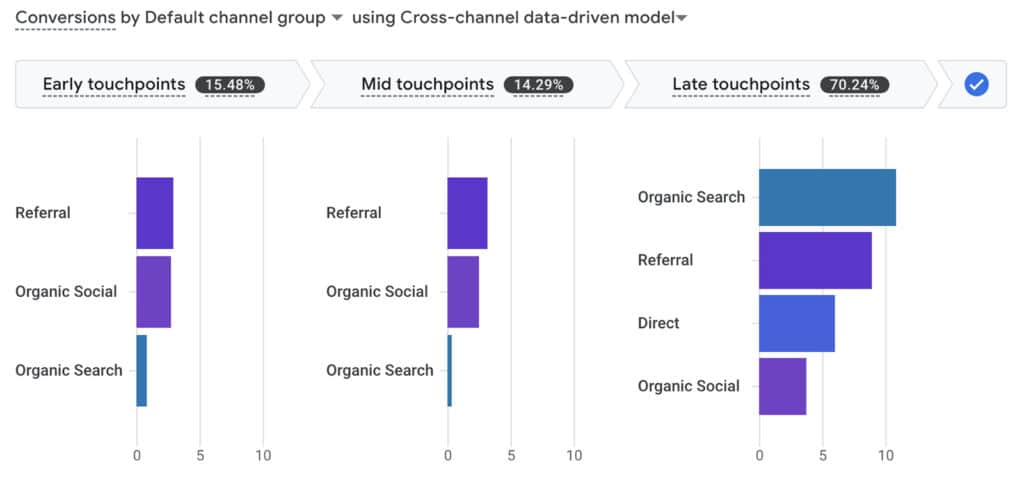
Nebojsa Savicic, Co-founder of Plainly, recommends using the Google Analytics attribution model with a 90-day lookback period. Nebojsa explains: “Our focus is on measuring first interactions because that means a prospect came to our website through a certain blog post, which signals the business impact of that content piece.”

“Even though we’re a SaaS company, our product is specific and we don’t offer a free trial. Our main conversions are booked demos. Unsurprisingly, our best-performing content is BOFU and we use SEO to build long-term value and ensure good search rankings.”
Revenue
Attributing revenue to specific posts isn’t easy, and you’ll probably never be able to get an exact number. But it’s possible to get a sense of the revenue your content generates, especially with the right attribution model.
Svitlana Shchehel explains that in addition to counting leads and conversions, SE Ranking measures “the amount of new MRR each of the content pieces generates. It’s worth noting that we use a first-click attribution model and also pay special attention to associated conversions.”
ROI
Like most metrics, revenue means more in context. How does revenue compare to cost, and what is the overall ROI of your SaaS content marketing?
Nick Jordan elaborates: “More sophisticated metrics like cost per acquisition and client lifetime value are relevant here. Teams can improve the grasp of their content marketing efforts’ overall ROI by tracking these metrics over time.”
Aggregating Performance Metrics
With aggregated performance data, you can get a helpful overview of content throughout your site. Then you can make smarter decisions about the types of content to create and writers to hire.
Topics
Take the metrics that matter most to your SaaS and sort by your site’s categories or tags. Do some topics far outperform others? Consider prioritizing these topics or making them the focus of your content marketing strategy.
Authors
Sort by the author to identify who resonates best with your audience and who drives the biggest business results. Consider whether your top writers can produce more content or use their posts to create frameworks for other authors.
Final Thoughts on SaaS Content Analytics
To find what’s working (or what isn’t), look far beyond pageviews. These SaaS content marketing metrics can guide your content, improve your SEO strategy, and show you what’s generating real revenue—so you know where to focus your efforts.
